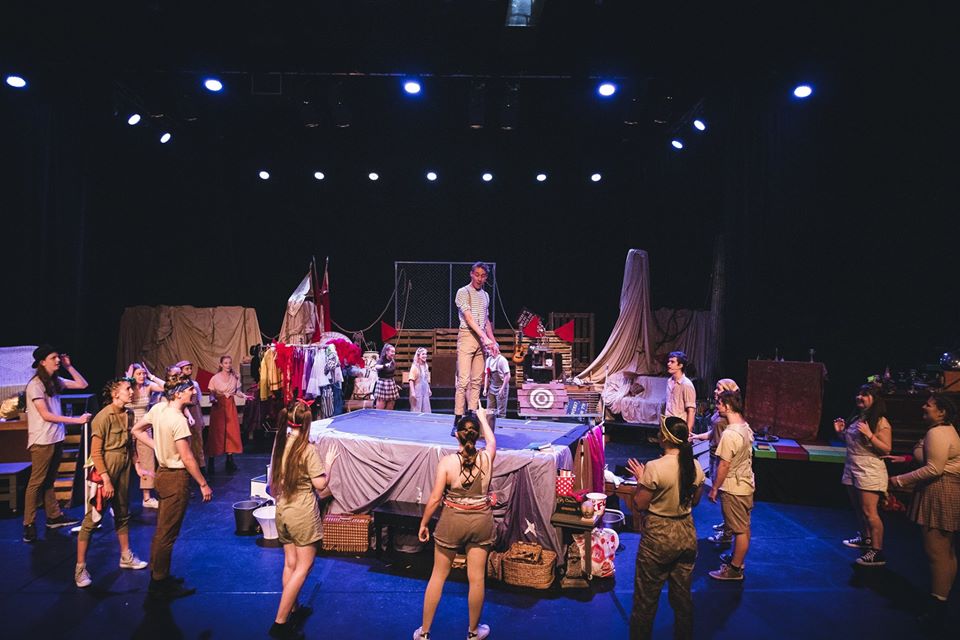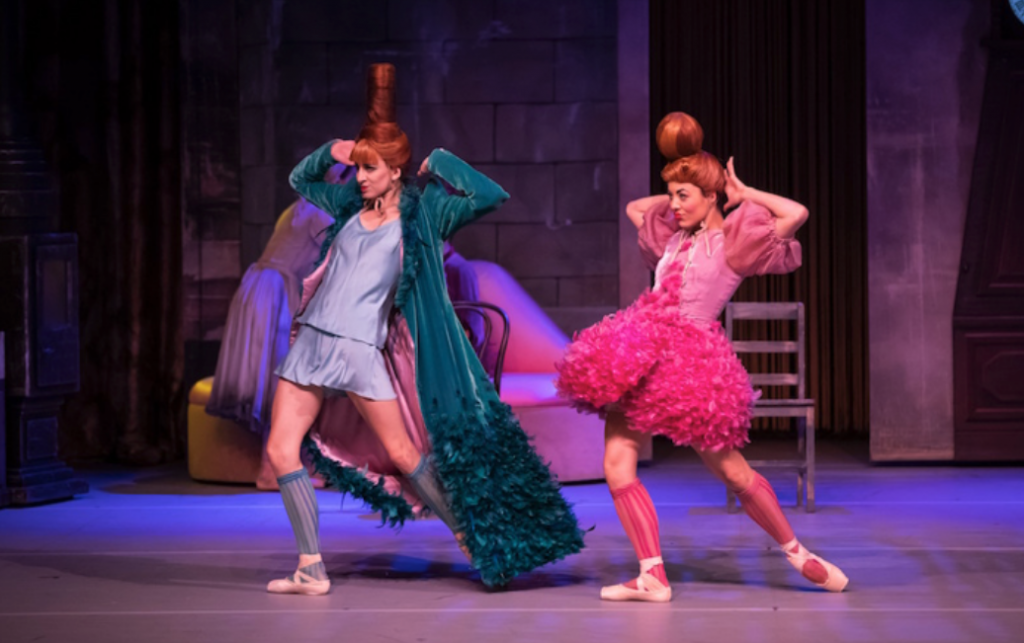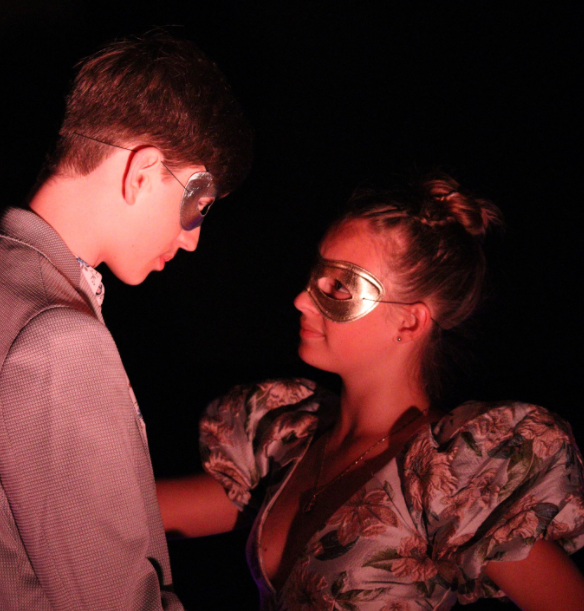
Arts Education in a Pandemic World
Over the last few months, Covid-19, and the resulting government restrictions, have had an overwhelming effect on the Performing Arts industry. Within the education sector, many theatre and dance companies and schools have had to use their creative skills to convert their lessons into a digital format. While luckily we have the technology to achieve such a task, there are many challenges unique to working within a digital classroom. Therefore, as classes slowly return back to normal, six current professional and independent teachers across multiple disciplines were interviewed to get their perspective on how they have adapted to the ‘new normal’ and how the pandemic has impacted them and their students.
The most significant change with Covid-19 was the need for teachers to reassess how, and perhaps even if, they can deliver their content efficiently and effectively online. In response to being asked to describe how they have handled the sudden transition to online learning, Zoom came across as being the most popular platform being used by the teachers to deliver their lessons. CEO of Harvest Rain Theatre Company Tim O’Connor explains that, “it was actually surprisingly easy and straightforward to manage and has given us great ideas for how we could deliver this kind of content remotely in the future (in a world beyond lockdown!)”. As someone who has used Zoom weekly for work and production meetings during lockdown, Zoom enables participants to stay productive and connected, especially as it handles large group meetings without drastically affecting the video or audio quality.

In addition to using Zoom, other teachers, like Jacqui Devereux from Queensland College of Dance, have used platforms like Facebook Messenger for their private tuition, complemented with the use of Zoom for their larger classes. From personal experience, Facebook Messenger has been easier for private tuition due to its lack of time restrictions, which Zoom has if you are using the free version, and audio issues. While Zoom is excellent for managing large group interactions through the mute function, for one-on-one consultations, Facebook Messenger enables both the teacher and student to hear each other without the audio cutting in and out.
According to performing arts coach Jackie Turner and CEO of Creative Caring, Diane Busuttil, other studios also created pre-recorded content for students. This was sent to them privately through links via YouTube and other streaming platforms. Importantly, as Diane commented, “…these are unique times and we need to be authentic about what we are trying to achieve. The choice was to do it within the limitations I had to work with, or not to do it at all. I chose to do the former”.
Since these teachers clearly are choosing to work within the limitations faced with Covid-19, the main tip to take away is the importance of research. Search for tips on the various functions of Zoom and other platforms via YouTube. As previously mentioned, it is surprising how user-friendly and effective these online tools can be once teachers are aware of all the functions. As Jackie concludes, “once you figure these out, it opens up so much opportunity for you to plan new and exciting ways of delivering education”.
With the move to deliver content online, there was a need to explore some of the benefits received by both students and teachers from this new form of teaching. Virag Dombay, an independent drama teacher, noticed how being in their own home made her students feel more comfortable during their lessons. As she stated, “The act of being creative is what we humans need to do to look after ourselves psychologically”. Because of this newfound comfort, teachers like Jackie Turner noticed students improving in confidence since they didn’t feel as self-conscious singing at home as opposed to in front of their peers. Similarly, academic classes like Music Theory have been more productive due to not only a lack of distraction from other students, but also the fact that teachers had more control over when their students could talk and ask questions, simply by unmuting their microphone.
For teachers, removing factors like travel time has greatly benefited them by enabling more time for preparation and resource gathering. Additionally, for students who rely heavily on public transport, at-home lessons not only removes the commute time but also reduces the stress of travel; for instance, waiting for the right bus to arrive on time. The ability to stay at home also had a positive financial impact for teachers and students due to savings on fuel and bus fares. Furthermore, with access to the internet and a wide, supportive community, many organisations and teachers have shared helpful and essential resources. Meg Cooper, Director of Mad Dance House, is full of pride seeing how her teachers and her team have “face[d] the challenge even though we were in uncharted territory. The courage of artists has always stood out to me. We are creatives. Throw us into any situation and we will always deliver”. It is clear that one positive to come out of this pandemic is the increased support that students and teachers have received, ultimately allowing both to grow and thrive in such trying times.
To balance the discussion, the teachers were asked to consider some of the challenges and/or limitations they had experienced when teaching online. As Tim O’Connor stated, “the medium has dictated the teaching”, and there were unfortunately some sacrifices and compromises required. For example, screen size restricts movement and, depending on the quality of the recipient’s laptop microphone, clarity can easily be lost. This made giving instruction challenging, especially when the teacher was standing away from their laptop. Similarly, for vocal students, the ability to fully demonstrate proper technique while still being able to be clearly heard is challenging through a video call. As a result, singing teachers are unable to observe as effectively the complete physicality of their student and functionally determine what needs to be adjusted to improve technique (e.g. alignment, breathing).
Additionally, and in comparison with the rest of the world, Australia doesn’t have the greatest internet quality or speed. This meant audio clarity, internet lag and distortion were a problem, especially for singing teachers conducting group classes in addition to private tuition. Another problem, for both students and teachers, was staying consistently engaged throughout the class. Jacqui Devereux noticed how much more energy she’d exerted as a result of having to listen more carefully and watch more closely, “…it’s more draining than when your students are in front of you, but it is very important as distance makes it harder to tell what’s going on with them vocally, but also emotionally”.
One way Tim O’Connor helped combat this problem was by scheduling shorter classes. He also suggested that keeping students on mute (unless they wished to speak) and employing the useful chat features often found on platforms like Zoom, has helped keep everyone focused and engaged.
Alternatively, Meg Cooper explained that dance teachers had a much harder challenge:
“Another thing is seeing people run free dance classes and inadvertently be competition for you. Especially when they are just in their living room pumping out classes and big studios are paying rent on physical premises. I think these teachers need to partner with the studios who have fed them for years. Talk to them-work out a win-win deal. I don’t think this does any good for our industry to give free classes. Yes, you can be kind but we are professional and you would never see a plumber giving their service for free! This is our industry and it is only as ‘professional’ as the people within it”.
Consideration also had to be given to insurance and duty-of-care especially for teachers like Diane Busuttil who teach classes in aged-care facilities. She recommended doing some research and getting in touch with larger dance organisations who can provide the relevant information/resources. Overall, while limitations around technology provided many challenges in delivering online teaching, teachers were still able to find numerous ways to adapt so that they could continue to provide high-quality education.
Reading these different perspectives on transitioning and adapting to the ‘new normal’ of online learning may have you reflecting on your experiences with these different online platforms, along with the experiences of your students. So, as restrictions gradually ease in each state, here are some lessons to be learned from this pandemic. For starters, don’t be scared, but rather embrace the ‘new normal’ in order to foster and maintain relationships between fellow teachers and staff as well as with your students who, as Virag Dombay says, “really need their teacher to help guide them”. Support your students and each other by providing tips and resources to ensure everyone stays connected and can still get the most benefit from your lessons regardless of where the classroom is based. Next, as Diane Busittil says, “Don’t wait for someone to advocate for you, do it yourself!”. Promote the fact that you have persevered, despite the challenging times and encourage everyone to continue to do the same.
Finally, and perhaps the most important advice of all… is to be patient! As Jackie Turner affirmed, “None of us teachers were trained in online education and we are doing our best. There are going to be some successes and some failures, but we are all doing our best to find out the most effective ways to deliver our lessons to our students in this foreign format”.
Special Thanks:
- Diane Busuttil, CEO of Creative Caring (@creativecaring01)
Creative Caring, which is based in Sydney, takes dance and music interventions to aged care homes, independent seniors and multicultural seniors groups throughout the community.
- Meg Cooper, Owner/Director of Mad Dance House (@maddancehouse)
Mad Dance House, located in Brisbane’s CBD, “offers an unrivalled offering of classes taught by industry recognised teachers for people of all levels – from the absolute beginner to the seasoned professional”.
- Jacqui Devereux, Singing Specialist/Head of Musical Theatre and Commercial Dance at Queensland College of Dance (@qldcollegeofdance)
Queensland College of Dance has a wide range of performing arts courses, ranging from classical to commercial dance and musical theatre, with a faulty of ex-professional and current professional performers and a “focus on creating real world opportunities for students striving for a career in the dance and performing arts industry”.
- Virag Dombay, Independent Drama Teacher
- Tim O’Conner, CEO of Harvest Rain Theatre Company (@harvest_rain, @brisbaneacademyofmusicaltheatre)
Harvest Rain, located in the northern suburbs of Brisbane, is “the world’s largest not-for-profit youth arts organisation, a company committed to creating engaging, high quality performance experiences and enriching, challenging training opportunities for the next generation of performers.”
- Jackie Turner, Performing Arts Coach






